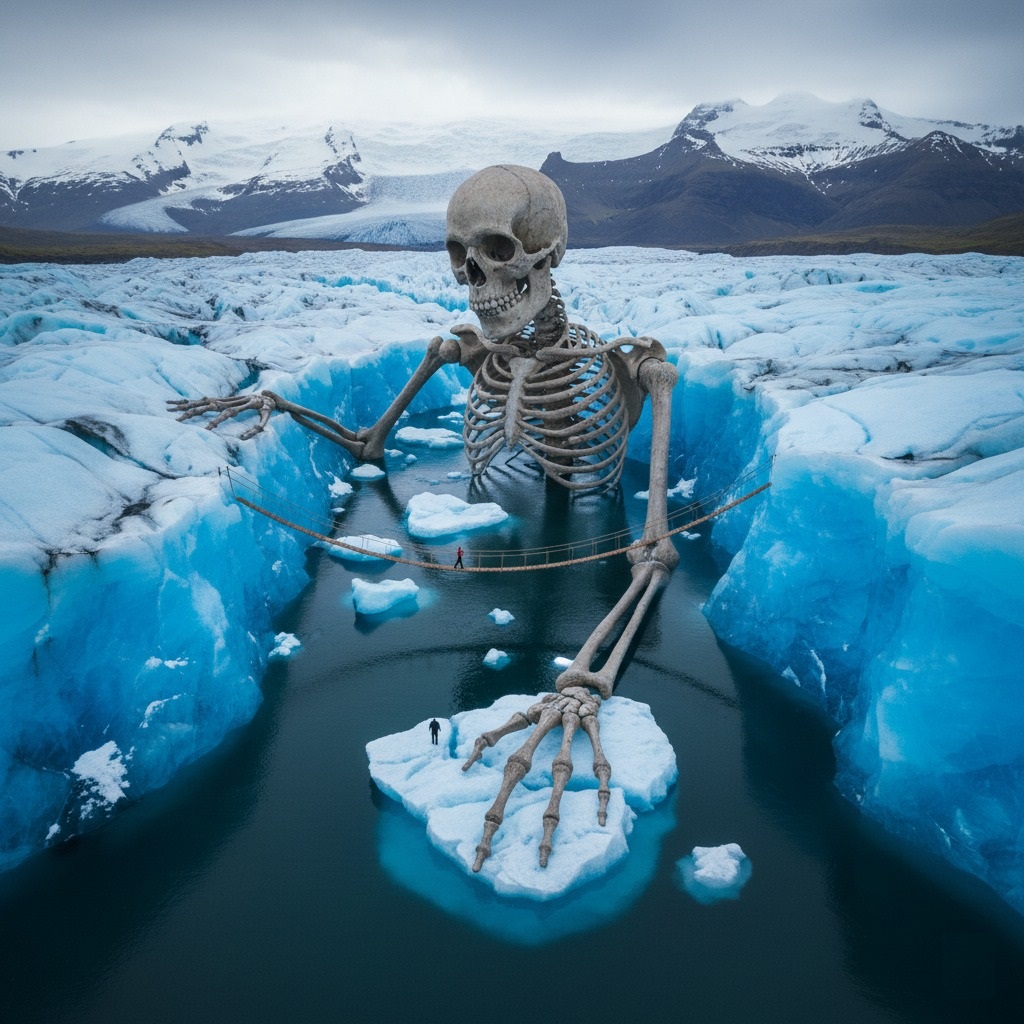The Jökulsárlón Colossus: Unveiling Iceland’s Glacial Giant

The year was 2047, and Dr. Aris Thorne, a glaciologist with a penchant for the unconventional, stood on the shifting edge of Jökulsárlón, Iceland’s most famous glacial lagoon. For decades, the accelerating melt of the Vatnajökull glacier had revealed forgotten Viking longships, ancient fishing traps, and even a perfectly preserved woolly mammoth. But nothing, absolutely nothing, prepared the world for what Aris and his team were about to uncover.
It began with an anomaly. Satellite thermal imaging, typically used to map sub-glacial volcanic activity, picked up an impossibly vast, organic signature beneath a rapidly retreating section of the Breiðamerkurjökull glacier tongue. Initial expeditions were cautious, fearing a new fissure or a hidden geothermal vent. Then, a severe melt-event, driven by an unusually warm summer, peeled back centuries of ice as if unwrapping a colossal gift.
What emerged was not rock, nor geothermal steam, but bone. Bone on a scale that defied all known biology.
“My God,” whispered Dr. Lena Petrova, chief paleontologist, as the first clear aerial drone footage beamed to their base camp. “It’s… a skeleton.”
A skeleton, indeed. Not of a whale, nor any dinosaur ever cataloged. This was distinctly humanoid, albeit on a scale that dwarfed even the largest sauropods. The skull alone, a vast, weathered cranium the size of a small house, stared sightlessly up from a deep, blue-ice trench. Its immense ribcage, like a ruined cathedral, lay partially submerged in the frigid, dark waters that now flowed around it.
The media, initially skeptical, erupted. “The Jökulsárlón Colossus” became the headline across every continent. Archaeologists, anthropologists, and mythologists descended upon the remote Icelandic site, their theories ranging from undiscovered hominid branches to echoes of forgotten gods from Norse sagas.
Aris, pragmatic as ever, focused on the immediate challenge: how to study something so immense, so fragile, and so deeply embedded in a dynamic, melting glacier. Specialized teams, using mountaineering techniques adapted for glacial exploration, meticulously scaled the exposed bones. Small figures, dwarfed by the skeletal hand, navigated precarious rope bridges strung between the colossal fingers and the wrist. Another figure, almost imperceptible against the vastness, stood on an ice floe, dwarfed by the sheer scale of a femur that was itself larger than a bus.
Carbon dating of minute tissue remnants, painstakingly extracted from deep within the bone marrow, yielded results that sent shockwaves through the scientific community: approximately 12,000 years old. This pre-dated all known human civilizations, placing the Colossus squarely at the end of the last Ice Age, a time of colossal megafauna and dramatic climatic shifts.
The questions were endless. How did it die? What was it? And perhaps most unsettling, were there others? As the glaciers continued their inexorable retreat, revealing more of the Colossus with each passing season, Aris and his team understood they weren’t just uncovering a fossil; they were opening a window into a forgotten epoch, challenging everything humanity thought it knew about its own ancient past, and the true giants that once roamed our world. The Jökulsárlón Colossus was not merely an archaeological find; it was a paradigm shift, etched in bone and cradled by ancient ice.
